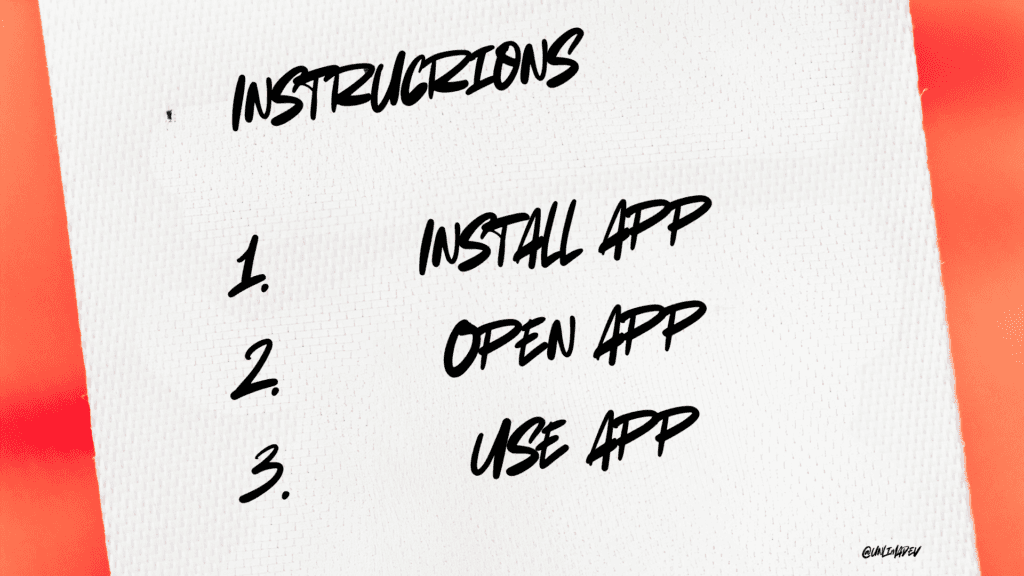Make it easy or how to make a product

September 5, 2024
When was the last time you read the instructions before using a new product?
Most likely, you simply took the thing and began to interact with it intuitively. If so, then the product was designed correctly. Products that require no instructions to use are the pinnacle of good design. But how to achieve this? And why is this so important?
First, let's discuss why we don't need instructions.
Modern products require fewer and fewer instructions due to the standardization and unification of interfaces. Many devices and programs have become similar to each other, allowing users to intuitively understand how to use them. Similar actions, such as swipes and clicks, are used everywhere, and learning new devices takes a minimum of time.
Technological developments have also led to products becoming simpler and more user-oriented. Intuitive design and automation of many processes eliminate the need for detailed manuals. If my mother used to write instructions for complex computers in 90-s, the modern generation easily copes with computers, based on accumulated experience and intuition.
Key points
- Natural user intuition. People don't like to read instructions — that's a fact. We strive to spend a minimum of time mastering a new device or interface. That's why products based on intuitive design inspire trust and sympathy from the very first seconds.
- Saving time and resources. A product that doesn't require instructions reduces costs for both users and businesses. Users save time, and companies spend less on creating and translating instructions, training materials, and technical support. Complex instructions often add unnecessary steps, confusing users and complicating the process.
- Best user experience (UX). Successful design minimizes friction between the product and the user. The simpler and clearer the device or program, the higher the customer loyalty. Good UX helps achieve this through predictable actions and interfaces. After all, the product should "explain" itself.
How does creating products without instructions affect the success of the product?
- Increase in the user base. The easier the product is to use, the wider its potential audience.
- Lower the barrier to the first purchase. Products that do not require instructions are perceived as less complex and more accessible.
- Increased adoption rate. When the user does not need to spend time learning the product, its adoption and mastery occur faster. This is especially important in the context of B2B products and SaaS solutions.
- Improved NPS and reduced customer churn. The ease of use of the product directly affects customer satisfaction. The clearer the product, the less often the user encounters problems. This increases the level of satisfaction, which, in turn, leads to an increase in the Net Promoter Score (NPS) - a key indicator of customer loyalty.
- Quick adaptation to the market. Products that can be used without instructions are easier to adapt to new markets.
- Increased brand value. Products with an intuitive design increase trust in the brand and strengthen its reputation. People remember products that are easy to use and are more likely to return.
Principles of designing products without instructions
- Focus on user scenarios. The product team must understand how users will interact with the product
- Mixing functionality. Often products become complex by trying to cover too many functions. Don't, implement everything gradually, it is useful for both users and you. Think about a roadmap.
- Testing on minimum functionality (MVP). The minimum viable product (MVP) should be tested for intuitiveness and ease of use
- Continuous feedback loop. It is important to collect feedback from users on time and make changes to the product to eliminate moments where difficulties arise.
- Simplifying interfaces and interactions. The product design should provide a minimum number of steps to achieve the goal.
Bottom line: Not only products, but also users have changed
The modern move away from instructions is due to several factors: product standardization, intuitive design, technological development, and changes in user expectations. This does not mean that development has stopped. Rather, it has become aimed at improving the user experience without unnecessary complexity.
Designing products that do not require instructions is not just a trend, but a strategic necessity for companies seeking to create a sustainable product. From a product approach perspective, this provides a number of advantages.
At unlimadev, we adhere to product standards and offer our partners a more universal solution.
@mint0x